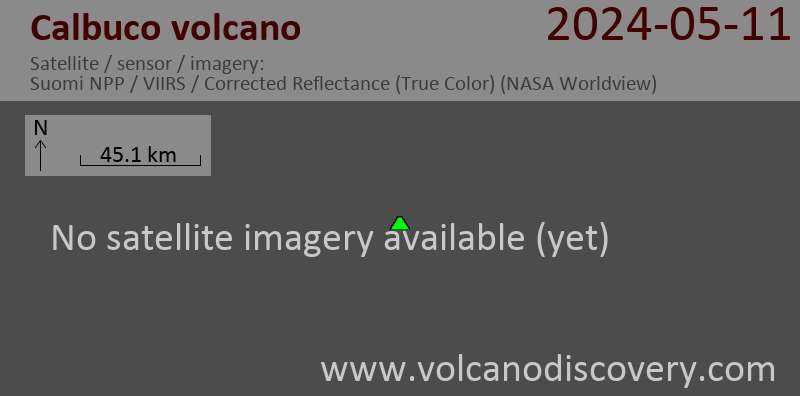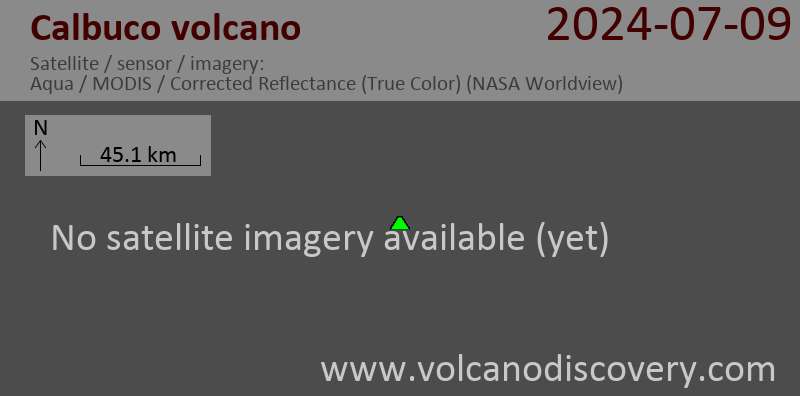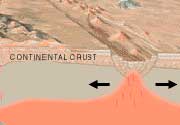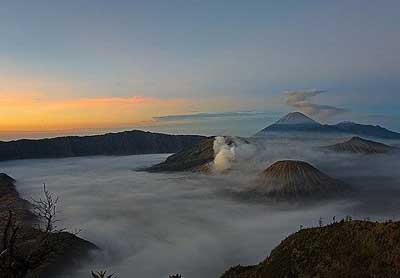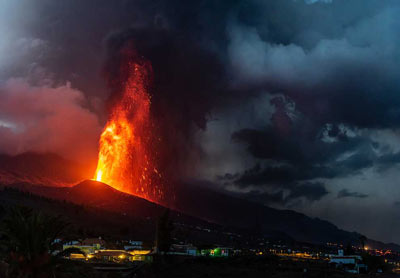Calbuco Volcano
Updated: Apr 27, 2024 17:17 GMT -
stratovolcano 2003 m / 6,571 ft
Southern Chile and Argentina (South America), -41.33°S / -72.61°W
Current status: normal or dormant (1 out of 5)
Southern Chile and Argentina (South America), -41.33°S / -72.61°W
Current status: normal or dormant (1 out of 5)
Last update: 17 Dec 2021 (seismic unrest, slight inflation)
Calbuco volcano, along with its neighbor Osorno, is one of Chile's most active volcanoes. It is located 11 km south of Lake Llanquihué and 30 km NE of the town of Puerto Mont in the Lake District in southern Chile.
Calbuco volcano consists mainly of blocky aa lava flows and tephra layers, and its summit is truncated by a 400-500 m wide summit crater. Debris avalanches from Calbuco have reached Lake Llanquihue.
One of the largest historical eruptions in southern Chile took place from Calbuco in 1893-1894. It ended with the formation of a lava dome in the summit crater. Later eruptions have enlarged the lava-dome complex.
[smaller] [larger]
Calbuco volcano eruptions: 2015, 1972, 1961, 1929, 1917, 1911-12, 1909, 1907, 1906, 1895, 1893-94
Latest nearby earthquakes
| Time | Mag. / Depth | Distance / Location | |||
Background
The stratovolcano edifice of Calbuco is elongated in a SW-NE direction and is the result of a complex history, creating 4 major units:Calbuco-1: the oldest volcanic edifice which is now eroded and only outcrops in deep gullies.
Calbuco-2: the main cone of Calbuco volcano, which consists of interbedded lavas and breccias. This edifice was truncated by a a 3 km3 debris avalanche to the NNW following a violent plinian eruption.
Calbuco-3: the complex of lava flows and domes on the northern flank emplaced after the debris avalanche. This unit partially fills the scar of the avalanche.
Calbuco-4: the historical lava dome and associated lava flows produced during the eruptions of 1893-94, 1917, 1929 and 1961.
---
Sources:
- Smithsonian / GVP volcano information
- López-Escobar et al (1995) "Calbuco Volcano and minor eruptive centers distributed along the Liquiñe-Ofqui Fault Zone, Chile (41°–42° S): contrasting origin of andesitic and basaltic magma in the Southern Volcanic Zone of the Andes", Contributions to Mineralogy and Petrology, v 119 (4), pp 345-361





